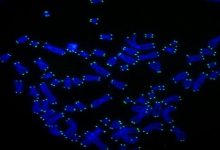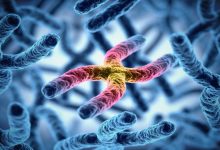
A collaborative team from the Wyss Institute, Arizona State University, and Autodesk designed single-stranded DNA and RNA origami
The genetic material in organism i.e. DNA and RNA are used as a raw material to make a drug delivery vehicles which can be used for the production of pharmaceuticals and chemicals. Nanotechnologists are making efforts to form microscopic device like tiny nanofactories.
These tiny nanofactories or nanotechnological devices comprise of A, C, T, and G which makes a shorthand strands. In these strands, regions are their which fold spontaneously and bind to each other by A-T and G-C bonding between different sequences.

These self-assembling nanostructures like DNA bricks and DNA origami have diverse application but their use in medical and industrial application is still puzzling .it is because of local defect in multistranded system caused by missing strands and other is that verification and testing is needed for each individual DNA strands ( more than 100- 1000 DNA are used)so it is difficult to carry out this method of DNA origami.
A collaborative team from the Wyss Institute, Arizona State University, and Autodesk designed single-stranded DNA and RNA origami which does not need to be tested and verified for the precise application instead they freely fold into various stable structures defined by the user.
They can replicate in the living cell which makes the production inexpensive even at large scale and the product produce is with high purities. This research shows new opportunities for drug delivery and nanofabrications.
The old origami was made from 1000 different unique component. Unlike traditional method, this new method’s approach is to synthesize stable single-stranded rather than multi strands folding origami to produce large nanostructure. These single-stranded components can be cloned into bacteria which will multiply this component.

The researchers identified new design rules to use for crossing DNA strands between different double strand region so that they can avoid problems faced by them with large DNA. Using large DNA created many problems like tangling of strands.
This new design helps in developing web-based automated design tool which integrates folding path leading knot free nanocomplex.
The team also used this technology for RNA which leads to many possible intracellular therapeutic RNA application as well as provides benefits like higher production level in bacteria.
These single-stranded DNA origami can be converted into light-sensing nanofactories as well as drug delivery vehicles by attaching functions proteins in precisely positioned DNA loops.
This technology can lead to large-scale production by leveraging the biological machinery of living cells.






